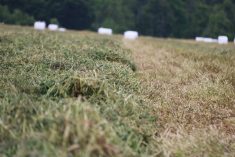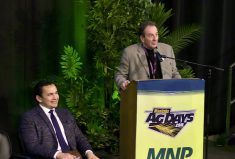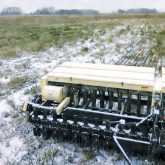Producers will have a few new options when it comes to forage insurance in 2022.
The Manitoba Agricultural Services Corporation (MASC) has added or expanded two programs geared towards producers diversifying their annual forage.
Why it matters: Two new or expanded forage insurance options will be on offer this year for producers looking to mix it up when it comes to their greenfeed.
Producers will now be able to insure polycrops planted for later grazing or forage harvest, should the mix fail to establish.
Read Also

Finally getting paid for sustainable farming?
Alberta project says they might have a line on a workable ecosystem credit model to reward farmers for sustainability, and Manitoba might be next
“Prior to 2022, we didn’t have any insurance available for them at all,” said David Van Deynze, chief product officer with MASC. “If they did that practice, they did it entirely on their own. This new polycrop establishment insurance provides a guarantee that once they plant these polycrop blends, at least enough of the different plant species will grow that they’re going to have some sort of a reasonable crop.”
The addition fills an ask from groups like the Manitoba Beef Producers (MBP), who have previously argued that insurance offerings must be adapted to work with emerging farm practices.
It had been a repeated topic when MASC and MBP met to discuss the beef sector’s insurance needs in recent years, the producer’s group has said.
Among the previous hurdles, MASC previously argued that developing insurance for blended crops was complex due to the number of species involved.
Van Deynze says the corporation eventually overcame that hurdle by turning to a land coverage based metric for the program rather than differentiating coverage by species. Under the new program, coverage will kick in for fields with less than 75 per cent ground cover.
“We don’t know what species they’re planting and there’s an infinite number of mixes and stuff like that,” he said. “The guarantee is basically, if you plant it, something will grow to the point where it looks like a crop.”
He described the program as a good starting point when it comes to designing insurance products for polycrops.
A second change will expand MASC’s definition of insurable greenfeed.
“We’re very strict on what crops can be in the mix for greenfeed,” Van Deynze said. “Greenfeed is oats, barley, mixed grain, wheat, rye, field peas, triticale, millet, sorghum or sudan grass, and by letter of our contract, if you threw in just a sprinkling of turnips or something like that, we would say that’s not greenfeed anymore. You can’t insure it as greenfeed.”
That policy became an issue for farmers looking at multi-species mixes, he noted.
Practices like multi-species blends have gained more attention in recent years as conversations around regenerative agriculture and soil health gain traction, both of which push practices that increase field biodiversity.
The expanded program now allows up to 20 per cent of a seed mix to be made up of “non-traditional” greenfeed crops.
“Farmers, what they do is they learn over time what grows really well on their farm. It might be a little bit of vetch or a little bit of whatever. And so if they say, ‘Man, that grows good on my farm. I want to have a little bit of that in my greenfeed land,’ now they have a little bit more flexibility in terms of what they can grow as greenfeed and still get greenfeed insurance from us,” Van Deynze said.
While MASC says the timing of the new programs was coincidental, and that they were in development prior to the 2021 drought, MBP president Tyler Fulton says both programs come at a good time for the industry following both last year’s extremely poor growing conditions, and the several years of dry seasons previous.
“I think it’s going to make a big difference,” he said.
More producers found themselves leaning on annual forage last year thanks to the severe impacts of drought on perennial hay, as well as a wealth of marginal greenfeed crops originally planted for grain but which, thanks to drought stress, fell to the feed market. That reliance will more than likely repeat, Fulton said, especially as hay stands struggle to recover from what has now been several years of cumulative damage from lack of moisture, and some of those fields may well need to be switched over to annuals in the near term.
Fulton pointed in particular to the expanded definition for greenfeed, noting that an increasing number of beef producers are adopting the regenerative ag practices that include multi-species mixes as part of their tool box.
“They’re putting in multiple varieties in the blend because it’s better for the soil. It’s more productive. We just know that it works, so it’s good to get some acknowledgment from MASC that these practices are happening,” Fulton said.
Likewise, he argued, the addition of polycrops establishment insurance lessens the risk for producers looking to experiment with the practice.
Producers have until June 25 to insure forage polycrops and June 30 to designate a field as greenfeed.
















